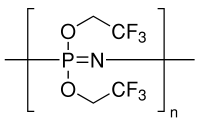Arterial distribution characteristics of Embozene particles and comparison with other spherical embolic agents in the porcine acute embolization model.
Sibylle Stampfl, Nadine Bellemann, Ulrike Stampfl, Christof M Sommer, Heidi Thierjung, Ruben Lopez-Benitez, Boris Radeleff, Irina Berger, Goetz M Richter
Index: J. Vasc. Interv. Radiol. 20(12) , 1597-607, (2009)
Full Text: HTML
Abstract
To determine the arterial distribution pattern of the embolic agent Embozene within the porcine kidney and compare it with those of other spherical embolic agents.Embozene, Embosphere, Bead Block, and Contour SE in size classes of 100-300 microm, 500-700 microm, and 700-900 microm and Embozene and Embosphere in the size class of 40-120 microm were used for total arterial occlusion in minipig kidneys. Organs were evaluated microscopically regarding vascular distribution of the different embolic agents and particle sizes.The following variations of arterial distribution were identified. In the 40-120-microm size class, Embosphere particles penetrated significantly deeper compared with Embozene (P = .04). In the 100-300-microm size class, Bead Block showed a significantly deeper distribution as microscopy identified particles in arteries much smaller than their nominal size. In the 500-700-microm size class, Embosphere and Contour SE showed a deeper distribution. The most uniform arterial distribution was observed in the 700-900 microm size class,. However, few Embosphere and Contour SE particles were found in arcuate arteries, also indicating a distal distribution.Throughout the four most-used size classes, from very small (40-120 microm) to large (700-900 microm), the distribution characteristics of the four tested materials vary substantially. Particularly, small Embosphere particles and small Bead Block particles showed a more distal distribution, as did medium-sized Embosphere and Contour SE particles. In the largest investigated size class, the distribution was more uniform. In general, the Embozene particles are very uniform in size, and they seem to reach vessels closely corresponding to their nominal size.
Related Compounds
| Structure | Name/CAS No. | Molecular Formula | Articles |
|---|---|---|---|
 |
POLY(BIS(2 2 2-TRIFLUOROETHOXY)PHOSPHAZ&
CAS:28212-50-2 |
(C4H4F6NPO2)n |
|
Properties and clinical development of a novel coating techn...
2010-01-01 [Recent Pat. Drug Deliv. Formul. 4(1) , 18-22, (2010)] |
|
A new polymer concept for coating of vascular stents using P...
2005-04-01 [Invest. Radiol. 40(4) , 210-8, (2005)] |
|
The efficacy of nanoscale poly[bis(trifluoroethoxy) phosphaz...
2007-05-01 [Invest. Radiol. 42(5) , 303-11, (2007)] |
|
Radiation grafting of hydrophilic monomers onto poly[bis(tri...
1994-09-01 [Biomaterials 15(11) , 937-43, (1994)] |
|
Polyphosphazenes as biomaterials: surface modification of po...
1993-05-01 [Biomaterials 14(6) , 430-6, (1993)] |